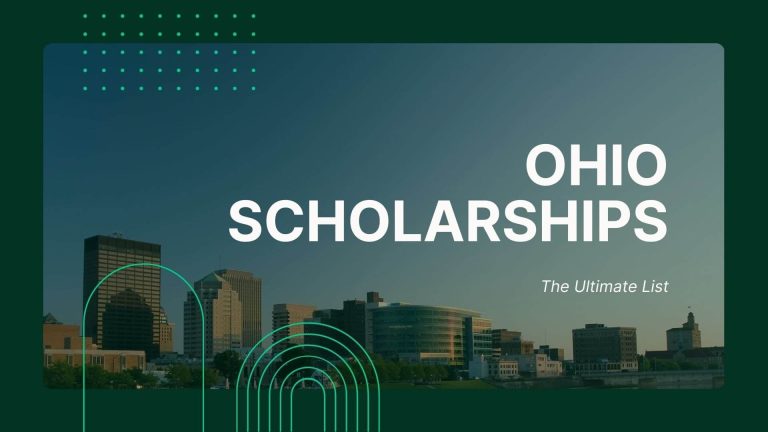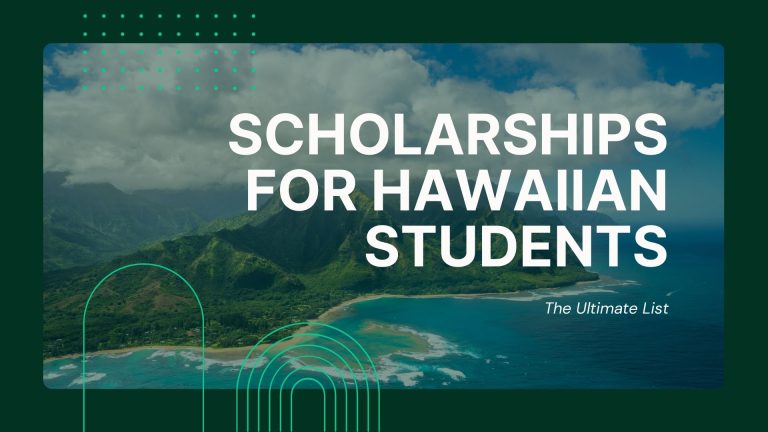Pursuing an engineering degree can be both challenging and rewarding, and the rising costs of higher education shouldn’t hold you back. At Scholarship Institute, we leverage our expertise and extensive experience in scholarship reviews to help aspiring engineers access valuable financial support. Our insights are rooted in analysis and trusted data, offering you a clear roadmap to navigate the complexities of funding opportunities.
We’ll cover everything you need to know about engineering scholarships, including top program providers, essential eligibility criteria, FAFSA requirements, and practical tips for increasing your chances of success.
Ready to take the next step in funding your engineering education? Explore our tailored scholarship recommendations today.
Funding Engineering Majors with Engineering Scholarships
What Are Engineering Scholarships?
Scholarships can help with the financial burden of earning an engineering degree. They are forms of financial aid that do not need to be repaid and aim to cover part of the cost of a student’s tuition, living expenses, or other things such as books or other materials. These scholarships are available for college students enrolled in four-year college or university as well as graduate students enrolled in an engineering program. In many cases, majors like computer science are also eligible for engineering scholarships.

Scholarships for Undergraduate and Graduate Students & FAFSA
If you are an undergraduate student or a graduate student, both programs are eligible to apply for engineering scholarships, whether they are need-based, merit-based, or specific scholarships. We recommend first filling out the Free Application for Federal Student Aid (FAFSA form). While the FAFSA is usually associated with college students and undergraduate aid, it’s also used for graduate students to determine eligibility for federal loans, work-study programs, and grants.
Differences between Undergrad and Grad Engineering Students and Federal Aid:
- Federal Loans: For undergraduates, Direct Subsidized and Direct Unsubsidized Loans are both available, with interest on subsidized loans covered by the government while the student is in school. For graduate students, only Direct Unsubsidized Loans are available, and Direct PLUS Loans can be taken out if additional funding is needed. Both options require the FAFSA, and unsubsidized loans accumulate interest immediately.
- Work-Study: Both may qualify for federal work-study positions, which provide part-time jobs to help pay for education. Eligibility is based on financial need and is determined through FAFSA.
- School and State Aid: Many undergraduate programs and states offer grants and scholarships based on financial need. On the other hand, graduate programs can offer need-based grants, scholarships, or assistantships using FAFSA data.
- Institutional Aid: Universities often require FAFSA completion to determine eligibility for school-specific scholarships, grants, and other aid for both undergrad and grad students. Fellowships, research or teaching assistantships, and department-specific scholarships can also use FAFSA data to evaluate financial need or merit for graduate students.
- Consider applying to large universities with thriving STEM programs, as these schools will have more funding for their science and engineering students. For example, students interested in the prestigious University of Michigan or Michigan State can apply for Michigan scholarships here.

Types of Engineering Scholarships
Not all scholarships are created equal. Depending on what the student is applying for, the scholarship will be oriented to target the student’s special talents, such as in sports or leadership in community service. Others are created based on financial need alone with other types of scholarships:
Merit-based Scholarships:These are for students who’ve proven themselves academically—basically if your grades are high, you have a chance of winning.
Need-based Scholarships: These help students who could use financial help, making it possible to keep studying even when money’s tight or an emergency situation emerges.
Specialized Scholarships: These aim to increase diversity, supporting students from underrepresented groups in engineering.
STEM Scholarships: If you’re studying in any of the STEM fields (science, tech, engineering, or math), there’s a good chance you’ll qualify for one of these. They’re specifically designed to promote and engage more students in these fields.
At Scholarship Institute, we understand the importance of diversity in STEM majors. This is why we work hard to gather important scholarship information and offer a list of STEM scholarships for women.

Industry-Specific Scholarships for Aspiring Engineers
Many major companies and industry organizations are eager to invest in the next generation of engineers. Industry-specific scholarships are often sponsored by tech giants, government agencies, and professional associations.
Top Industry-Specific Scholarship Programs:
Google Scholarship Programs: Google offers multiple scholarships for engineering students, such as the Google Generation Scholarship and Google Lime Scholarship.
Boeing Engineering Scholarship: Boeing supports students in aerospace and mechanical engineering with scholarships based on academic merit, financial need, and leadership potential. They often target students involved in STEM activities or interested in aviation careers.
Lockheed Martin STEM Scholarship: This program provides funding for students majoring in engineering, computer science, or mathematics, emphasizing applicants who demonstrate leadership potential and community involvement. Recipients may also be considered for internships with the company.
How to Apply for Engineering Scholarships
Make sure to research and review the eligibility criteria for each scholarship and review when the deadline is. A mistake often made is to start an application only to find out the deadline has passed or if a student is too close to gather all the materials.
Tailor your application to highlight your passion for engineering and any relevant experiences. Ask yourself questions about when the moment you found out you wanted to be an engineer was, what your dream job would be, or how you can help communities by innovating with more infrastructures.
Again, submit your application well before the deadline; the sooner, the better. We also recommend following up with the scholarship provider to ensure your application was received and to show your interest and professionalism.

Top Engineering Scholarship Providers
1. National Science Foundation (NSF)
The U.S. National Science Foundation is an independent federal agency that supports science and engineering in all 50 states and U.S. territories and has programs that support both undergraduate and graduate students. It was established in 1950 by Congress to promote the progress of science, advance national health, prosperity, and welfare, and secure national defense.
Their investments take about 25% of federal support to America’s colleges and universities for research driven by curiosity and discovery. NSF also supports solutions-oriented research with the potential to produce advancements in society.
2. National Aeronautics and Space Administration (NASA)
Everyone has heard about NASA before. The National Aeronautics and Space Administration defines itself as an independent agency of the U.S. federal government responsible for the civil space program, aeronautics research, and space research.
Nasa offers the Pathways Program, where students have the opportunity to work and explore careers with paid work experience and a dynamic career development program at the beginning of their careers.
3. Society of Automotive Engineers (SAE)
SAE International aims to engage with global industry leaders and explore cutting-edge innovations that shape the future of automobility. It features different design competitions focusing on professional development for students interested in pursuing engineering degrees. From formula hybrid to aero design to the Autodrive challenge, engineering majors can collaborate and work on exciting projects that can make a difference in their careers.
4. American Society of Mechanical Engineers (ASME)
ASME (American Society of Mechanical Engineers) “promotes the art, science & practice of multidisciplinary engineering around the globe.” The Scholarship Application usually opens on December 1 for 4-year bachelor students, Graduate students, Community College/2-Year Technical Programs, Associate degree students, and graduating high school seniors pursuing degrees in related disciplines.

Secrets to Getting That Scholarship
There are no secrets to getting scholarships, but for sure there are strategies that will highly increase the chances of winning a scholarship:
- Be Genuine: Scholarship committees appreciate real stories that get personal. Try to avoid listing achievements. Instead, explain why they matter to you, how they’ve shaped your goals, and what it took to get there. This helps reviewers have a more holistic idea of who you are than just grades and activities.
- Target Smaller Scholarships: If you are not experienced in applying for scholarships, go for the less obvious options. Local, industry-specific, or even unusual-interest scholarships can have less competition.
- Know What the Scholarship Cares About: Research the scholarship’s mission and goals. If they prioritize community service, show how you’ve impacted your community. Edit your application for the scholarship’s purpose.
- Accumulate Scholarships: Rather than relying on one significant award, apply for multiple smaller ones.
- Focus on Your Strengths: Avoid presenting yourself as the “perfect” candidate; emphasize a few core strengths that genuinely reflect who you are, but maintain authenticity.
- Get Strong Letters of Recommendation: Letters from people who truly know you, like teachers or mentors, often speak louder than generic ones.
- Polish Your Writing: Take the time to write, edit, and ask someone to proofread your application to ensure it feels ready.

How to Leverage Internships and Research Opportunities
Many scholarship providers value candidates who have hands-on experience, as it showcases your commitment to the field and your ability to apply theoretical knowledge in practical settings.
Benefits of Internships and Research Projects:
- Skill Development: Internships and research help you build technical and soft skills, such as problem-solving, teamwork, and communication, making you a stronger candidate for scholarships.
- Networking Opportunities: Working with industry professionals or academic researchers can open doors to mentorship and letters of recommendation, both of which can strengthen your scholarship application.
- Demonstrating Passion: Completing an engineering internship or research project shows your genuine interest in the field, which is something scholarship committees look for. Highlight any significant projects or accomplishments in your application essays.
Example of Leveraging Experience:
If you completed an internship at a tech company, mention specific projects you worked on and any innovative solutions you contributed.
Frequently Asked Questions for Engineering Students
1. Do High School Students Interested in Engineering Have Scholarship Options?
Yes, High school students planning for a future in engineering can find many scholarships that help cover college costs. Many of these programs are also created for students planning to pursue a STEM degree, like computer engineering. Some scholarships even provide mentorship and resources for students before they start their undergraduate journey.
2. How Can Undergraduate Students Increase Their Chances of Winning Scholarships?
For undergraduate students, especially in fields like engineering and computer engineering, engaging in projects, competitions, or clubs can make your application stand out. How? Scholarship committees appreciate students’ commitment and genuine interest in their field, so even informal and personal experiences can help boost your chances.
3. Are There Engineering Scholarships That Specifically Target Graduate Students Focused on Computer Engineering or Tech?
Yes, scholarships, grants, and fellowships are available for graduate students focused on computer engineering. Tech companies, professional organizations, and universities also provide financial research support, particularly for students advancing in high-demand tech areas. Look for programs that align with your specific tech interests and research focus.
4. What if I’m an International Student? Can I Still Apply for These Scholarships?
There are fewer chances, but many scholarships are open to college students coming from abroad, especially if they’re privately funded or provided by organizations that welcome diverse applicants. Look for scholarships explicitly stating they’re open to international students, or ask the scholarship provider directly. It takes a bit more research, but they’re out there. Check out scholarship search websites such as Bold.org and search for “international students.”
5. How About Non-Traditional Students—Like if I’m Returning to School Later?
Non-traditional students have options. Many scholarships are open to anyone pursuing an engineering degree in computer engineering, mechanical engineering, or electrical engineering, regardless of age or background. Some scholarships even target career-changers or those returning to school after a break, so don’t hesitate to apply. Just check the eligibility criteria to be sure.
6. How Do I Get Strong Letters of Recommendation?
Think of people who know you well and can discuss your skills and character beyond the classroom. Teachers, mentors, or supervisors you’ve worked with closely are perfect. Sometimes, you only need to ask your professor, even if you think you don’t have a close relationship, and they might be watching you more than you think. A strong letter comes from someone who can speak to your qualities with examples.
Want to explore different scholarship opportunities and start applying? Visit the Scholarship Institute page to find all kinds of scholarships waiting for you!

Michael Alexander
Michael's experience with scientific research foundations informs his work at Scholarship Institute, where he leverages his strong research background to provide valuable insights across various fields. Specializing in review articles on scholarships, particularly in STEM, he ensures that students receive well-informed content to effectively navigate their financial options.






